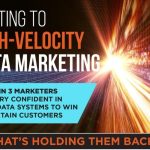
Cannes Lions awarded three Cyber Grand Prix awards this year. Each of the three winners will be covered in great detail at the upcoming Best of Global Digital conference held on August 14th at the Sime Darby Convention Centre.
Journalist and content marketing veteran Hando Sinisalu has interviewed the three winning agencies hailing from Stockholm, Melbourne and New York.
Leading up to the August 14th event we will be publishing all three Cyber Grand Prix winning case studies along with Hando’s interviews. Here is the first one from Australia…..
Transport Accident Commission of Victoria, Australia (TAC) and Clemenger BBDO of Melbourne created a unique road safety campaign “Meet Graham”, highlighting how vulnerable the human body is to the forces involved in road accidents. At the centre of this project is an interactive lifelike sculpture Graham, demonstrating how a human body would need to be built to survive a car crash. The campaign won 2 Grand Prix awards at this year’s Cannes Lions.
The following case study is based on the interview with the Clemenger BBDO team: Naomi Gorringe (Group Business Director), Stephen de Wolf (Creative Director), and Matt Pearce (Senior Planner).
BACKGROUND
Transport Accident Commission (TAC) is a government organisation in the Australian state of Victoria, promoting road safety issues and reducing the incidence and severity of road trauma. They regularly highlight issues to increase awareness, change behaviour and promote the road safety message.
TAC is known for its powerful road safety public education campaigns which emphasise the personal costs of dangerous driving practices (such as speeding and drink-driving) using emotive, educational and enforcement based themes. However, despite all these social campaigns, the number of road accidents in Australia keeps increasing from year to year.
BRIEF
The brief was to communicate to the Victorian public in Australia about the human body tolerance to impact force in case of a road accident.
CONTEXT FOR THE CREATIVE IDEA
Matthew Pearce, Senior Planner, Clemenger BBDO: “Fundamentally Graham’s idea is about human being’s vulnerability – and how it is affected by the core road safety decisions that are made (such as the type of car you buy or the stage of the roads you’re driving on) and even more importantly by human behavior (if people decide to put on the seat belts or if they disobey the laws, e.g. drinking alcohol and driving).”
Stephen de Wolf, Creative Director, Clemenger BBDO: “It’s also important to mention that the idea was to talk about the vulnerability to an impact force that’s created by a relatively low speed – 18 mph (ca 30 km per hour). We needed to show just how badly equipped our bodies are to handle even a slow-speed traffic accident.
Talking about the vulnerability of the human body was a different type of message in Australia where no one’s really spoken about it. Like probably everywhere in the world, in Australia the conversation has always mostly been about bad behaviour such as drink-driving, speeding, etc. Our client, Transport Accident Commission (TAC) in Victoria has always been in the forefront of the road safety advertising. They’ve done a lot of the so-called shock advertising, but it might not be very effective because the number of accidents is going up here, and actually everywhere in the world. So we knew from the beginning that we would have to communicate in a new way.
Also, we didn’t want to make a commercial. We didn’t want it to be just a short-term campaign. We needed something that would basically exist as long as people are using the roads. It needed to live beyond the media buy, it needed to live forever.”
CREATIVE IDEA & EXECUTION
Clemenger BBDO team: “We knew that instead of showing just another shocking crash, which was seen before, we had to find a more human kind of a pain point. We decided to focus on the human body itself and as soon as we talked about human’s body, we opened up a new way of thinking of road safety messaging. That was the concept everyone could relate to.
So we looked a bit into science (including evolutionary science) and understood that we can do something interesting with it. The truth is that driving cars has been around only for about 100 years whereas the human body is over 200 000 years old, so this made us think about how should human beings evolve and how should we be designed to survive the crashes happening every day. When you look around, you see that everything has been engineered around humans – cars, roads, etc. – so we wanted to show what would it look like if humans were engineered around the impact force.
We had a lot of data to work with – TAC itself had 25 years worth of science and data, for example. So we decided to bring this science to life. But as the information of road safety science and data is really dry, we needed to find a way to make it really relatable and keep it human on a fundamental level. If you can get people to understand it’s relevant for them, you have a bigger chance of getting people engaging with it. So we needed humanity to leverage it and to keep people interested. That’s how the idea of Graham – the only person designed to survive on our roads – was born.
It was TAC’s requirement to have the project evidence-based, so everything behind the project and all the data that went into it, was 100% scientifically correct. Only the actual sculpture of Graham was a creative interpretation – and obviously a creative challenge.
We had different specialists involved in the creation process: we had a trauma surgeon, a road safety engineer expert, and an artist – Patricia Piccinini – to develop the sculpture. The main features of the sculpture were found when we started to interpret the data. Our aim was to identify weaknesses in the human body and there were eight main weaknesses that came out. The way these eight weaknesses were modified and depicted as a sculpture – this was a creative interpretation of Patricia.
The way she interpreted it was very important because when you look at the Graham sculpture, it is pretty compelling and intriguing so it kind of makes you want to learn more about these eight universal features. And this is important information for all road users – it doesn’t matter if you’re a driver, pedestrian or sitting in the back seat.
And the online experience (http://www.meetgraham.com.au/) was also a very important piece of this project. This is as close as you can get to seeing Graham in flesh. We used Google Tango and the augmented reality there to let people really experience the physicality of Graham. All of that data and engineering sits beneath the surface of Graham and that’s where the Google Tango and AR became really important because it allowed people to see beneath the skin. And that’s where most of the story exists. It lets you understand why Graham looks like he does.”
RESULTS
• Within the first week of launch (July 2016), Graham had attracted 10.8 million website views;
• Within ten days, he had been featured in 150 broadcast news stories, 700 online news articles;
• Graham quickly became a social media phenomenon and was one of the top-trending stories on Twitter and Facebook, reaching over 8.8 million people.
Naomi Gorringe adds: “In the case of Graham it’s a unique situation where the ROI was significantly higher than in any other traditional campaign we’ve done (and we do a lot of those as well for TAC). Graham has by far exceeded the results of any of those regular traditional campaigns, even though there was no paid media.
And it’s very viable. Graham has been live for 12 months now and it keeps going – the installation is travelling around the country and people are still also constantly visiting the website. Also, a huge part of the project is the education of school students. School curriculum has been developed by Graham and teachers are taking students to see him and use him in relation to different subjects, like health, science, even art, etc. Schools are using the website as an educational tool as well.”
LESSONS
• Naomi Gorringe: “I think the client has to be brave and let go a bit of control with this type of project. In our case, TAC had the necessary information and data, but they didn’t know what this data would create. They had to hand over the control. So an important element is definitely trust and bravery on the client part.
• When we were launching the project, we didn’t just put it out there and hoped for the best. You can’t really just hope for the best because any big news story on the day could easily overtake it. We had a very vigorous PR-plan around it as well. We had various target audiences, e.g. people interested in road safety, people interested in science or arts, etc. We also had some popular publications and media on board too. So we had a very thought-out, well-targeted and specific PR-campaign that helped us to get that first critical mass behind Graham.
• And one more thing – Graham is not just an ad that might go out of style after couple years because it’s message may not resonate anymore. It’s an experience and an educational tool and it definitely has a message that resonates in the community and hopefully people can learn from it forever. ”
• Matthew Pearce: “Also, in today’s world, everything’s very much focused on tech. And Graham is also a data visualisation technically. But I think that some of the most powerful ideas of recent times, like Graham or Next Rembrandt, are the ones where tech drives the idea but takes the back seat as well. The real key is humanity because people still respond emotionally. You still need to have the human touch. Marketers are too focused on shiny new toys. Of course, shiny new toys should drive something, but they should also connect with people emotionally and on a human level. And that’s what Graham reminds us. You can do an amazing thing but if you can’t connect to a person you’re trying to talk to, it just won’t work…”
Want to glean more insights off Hando and hear more award winning digital work this August 14th? Click here to find out more on the ‘Best of Global Digital Marketing Conference’ or contact Ruby at 03-77262588 or ruby@adoimagazine.com
BEST OF GLOBAL DIGITAL MARKETING Conference 2017
For the seventh year running, we are bringing back the famous Best of Global Digital Marketing Conference to KL with a special focus on Content Marketing this year. Unique case-study based learning, as our team monitors over 200 digital marketing award shows across the globe and interviews the winners. Based on this extensive work, we produce in-depth case studies.
Speakers with digital domain expertise:
• Hando Sinisalu, CEO of Best Marketing International
• Kyoko Yonezawa, Creative Technologist and member of Dentsu Lab Tokyo
• Scott Gray, Experience Director, Mirum South Africa
Global Case Studies include:
BANKING & INSURANCE: Compare The Market, Advocards, Allianz, Ally Bank, Barclays….
TECHNOLOGY & STARTUPS: Hubspot, Pipedrive, MoveHub….
AUTOMOTIVE: Volkswagen, Volvo, Nissan, etc FMCG: Ariel, Unilever, Snickers…
RETAIL: McDonald’s, Harvey Nichols, Zalando….
TRAVEL & TOURISM: Qatar Airways, Transavia, Finland Tourism, Sweden Tourism, KLM…
Each best practice case study is presented based on…
Business problem: What is the market situation? Who are the competitors? What is the target audience? What are the main business/marketing challenges? What are the goals?
Solutions: What are the consumer insights? What was the creative strategy? What was the media strategy? What were the results of the campaign?
Lessons: What other marketers from other countries/other business sectors could learn from this case study? What are the main mistakes to avoid?
The Best of Global Digital Marketing Conference has won popularity in more than 30 cities around the world from Singapore, Moscow, Jakarta, Istanbul to Amsterdam, Johannesburg, Prague, Shanghai, Seoul, etc.
Date: 14 August, 2017 (Thursday)
Venue: Sime Darby Convention Centre, Kuala Lumpur.
Time: 8.30am – 5.00pm
Book your seats early! Call Ruby on 03-77262588 or ruby@adoimagazine.com
MARKETING Magazine is not responsible for the content of external sites.













